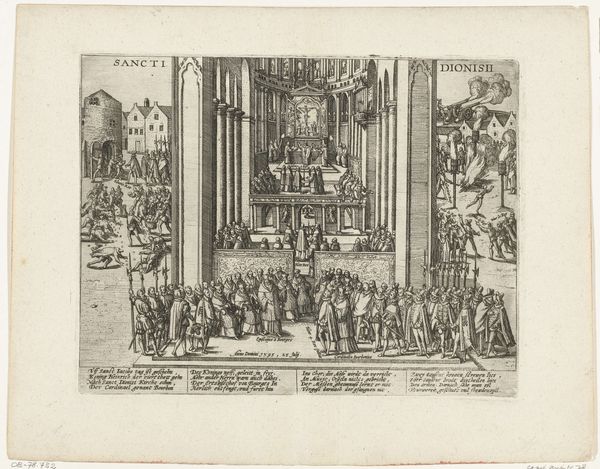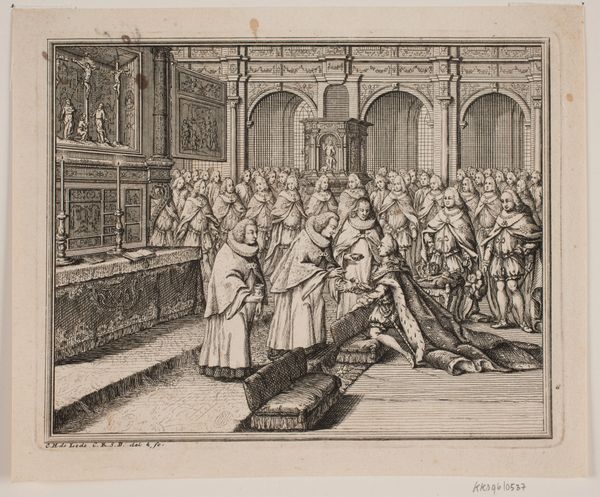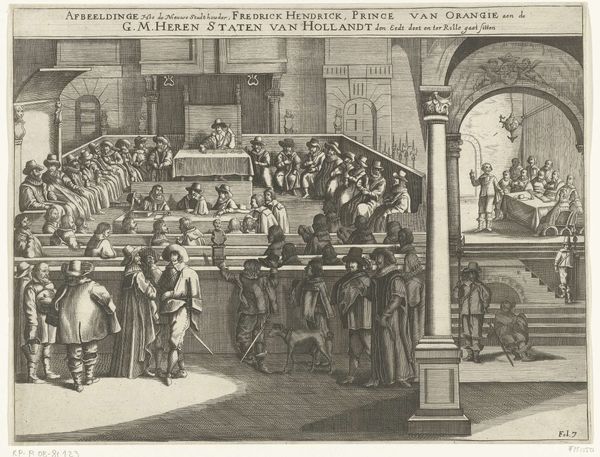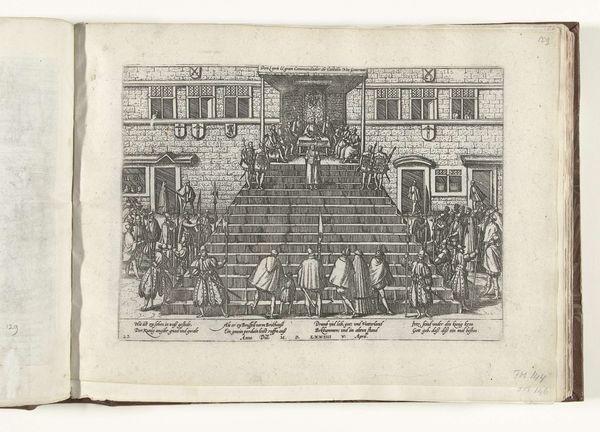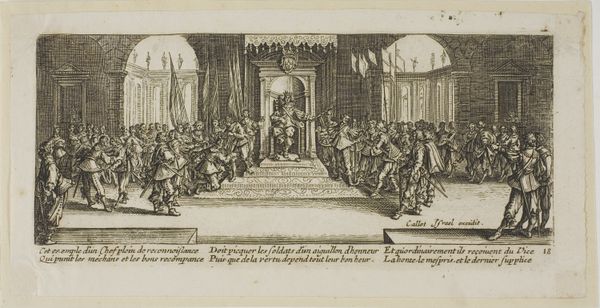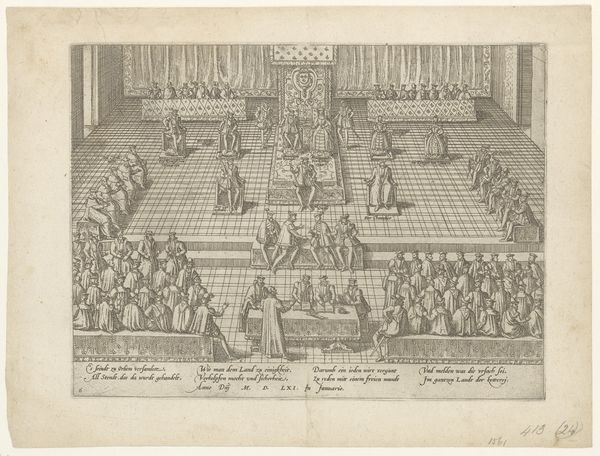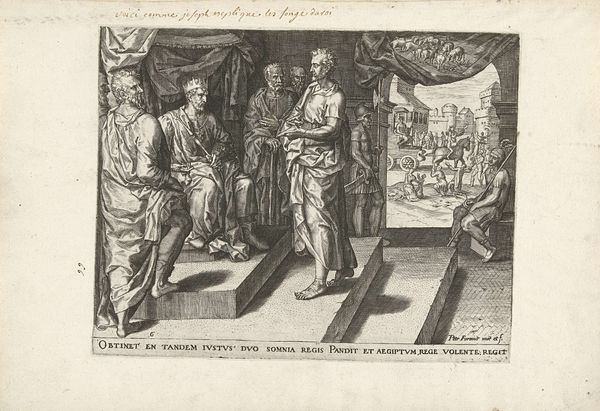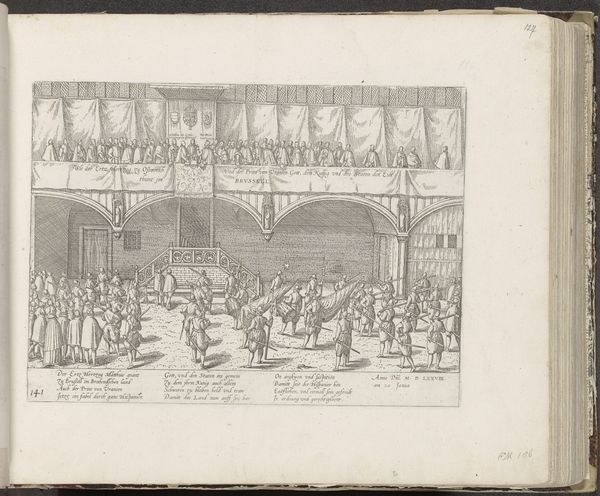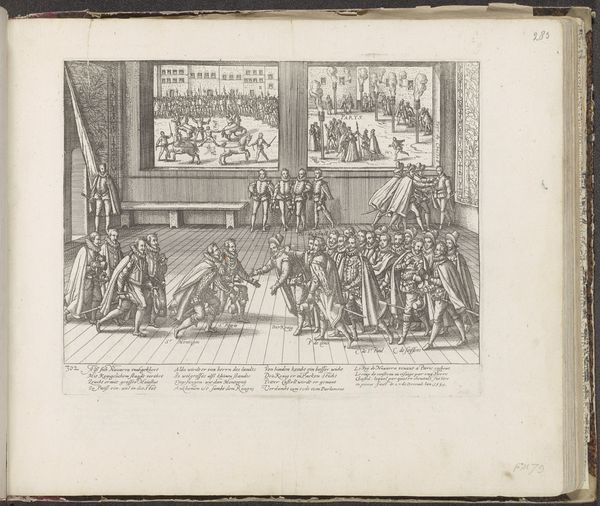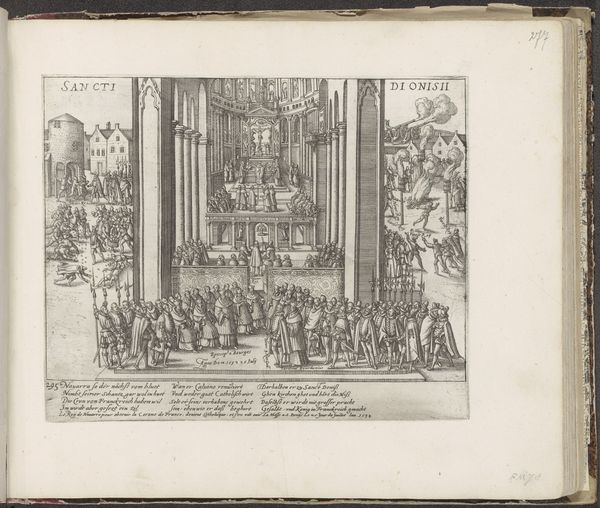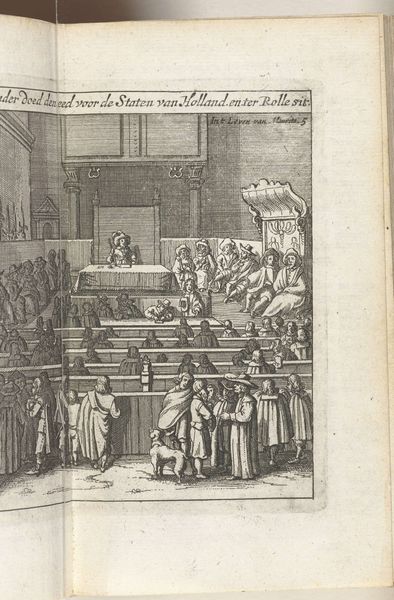
print, engraving
#
aged paper
#
toned paper
#
baroque
#
mechanical pen drawing
# print
#
sketch book
#
figuration
#
personal sketchbook
#
sketchwork
#
pen-ink sketch
#
line
#
sketchbook drawing
#
history-painting
#
storyboard and sketchbook work
#
sketchbook art
#
engraving
Dimensions: height 210 mm, width 280 mm
Copyright: Rijks Museum: Open Domain
Curator: Frans Hogenberg’s engraving, titled "Afgezant van Hendrik IV bij de paus, 1595," dating from around 1595 to 1597 and currently held at the Rijksmuseum, depicts a significant historical moment. What strikes you most upon viewing it? Editor: Hmm, an immediate sense of theatrical formality, maybe a little overwrought. Look at how the space is staged! One area for the entrance procession, another almost like a stage with the Pope at the end. There’s almost too much going on – very busy. Curator: Indeed! It’s a study in power dynamics, isn’t it? The delegation approaching the Pope… it reflects the complexities of religious and political authority at that time. Notice how Hogenberg uses architecture to frame and reinforce that hierarchy. The linear perspective guides your eye right to the Pope. Editor: Yes, and everyone is carefully arranged – but stiff, almost posed. Like those awful family portraits where no one quite knows what to do with their hands. But still, that central figure bowing down… vulnerability is laid bare, too. What kind of cultural dialogue was Hogenberg hoping to spark with this piece? Curator: The image acts as a symbolic record and carries immense cultural weight, memorializing a key point when Henri IV sought papal absolution. By converting to Catholicism, Henri secured his rule over France and, in turn, affected the political landscape of Europe. This image provided a lasting record and propaganda piece. Editor: Absolution can be a thorny theme for visual representation, especially when it carries such political freight. Did Hogenberg have a specific point of view, do we know? Curator: Hogenberg often depicted political and religious events with a documentary eye. He was Flemish, and therefore aware of religious tensions, and was an engraver producing these kinds of historical prints on commission, meaning it’s hard to separate objective chronicle from propaganda, though his choices tell a subtle story. Editor: And it's a very *stark* visual story – almost clinical in its detail. There's no romance, no drama, despite the weight of the occasion. Even now, seeing this event, it’s really powerful, even though you’re viewing it as a reproduced etching hundreds of years later. Curator: It is precisely that detached quality combined with minute detail that conveys a certain truth – or at least the carefully constructed truth that served a purpose. This piece freezes a key negotiation, a potent example of images functioning as a vehicle for complex negotiations of memory and cultural continuity. Editor: True enough. Sometimes the simplest renderings tell the most nuanced stories. It's made me think about the fine line between art and historical record again. Curator: Indeed! A powerful print and window onto history, indeed.
Comments
No comments
Be the first to comment and join the conversation on the ultimate creative platform.
